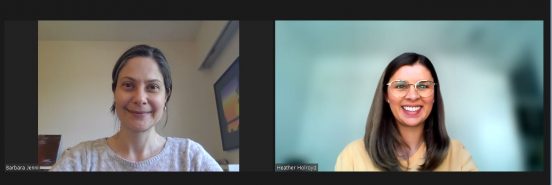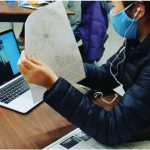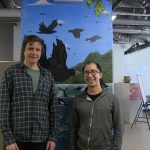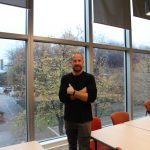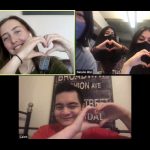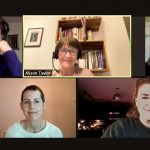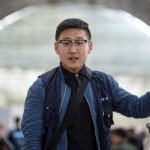Why you should consider community-engaged learning
By Barbara Jenni
During the fall term of 2020, I took advantage of many graduate courses being offered online (as a result of the pandemic). Through the Western Deans’ Agreement, I “visited” UBC’s Faculty of Education virtually, bypassing travel logistics and skipping the ferry line-up. In my doctoral studies at UVic (Educational Studies), I explore the university as a site of knowledge creation. I am interested in how we can make academic knowledge more accessible to reduce social inequities as well as strengthen research outcomes. The course I took in Political Economy of Education promised to “address issues related to what and whose “knowledge” is valued in education”. I was eager to learn about topics in political economy of education and engage with theories that would inform my developing dissertation proposal.
As student researchers we are expected to negotiate alignment of our own scholarly interests and personal values with assigned course requirements. Securing a research assistantship that corresponds closely with our personal aspirations typically is rare. Most of us are also accustomed to take in course content through the domains of writing and presenting, both important academic skills for grads to develop. But this course was refreshingly different. As an alternative assignment to a term paper, Dr. Alison Taylor gave students the choice of working with a community partner in action-oriented scholarship throughout the semester.
Curveball! Should I opt to support the work and social justice goals of a community organization? I have extensive experience working in community-based settings. Still, at first, I struggled to imagine what I could bring to an action project as a student. I also pondered whether it was advisable to choose community-engaged learning (CEL) over honing my academic writing skills. And I was particularly concerned that finding a community partner organization and establishing a relationship would take more time than I was able to give. Despite my initial hesitation, I remained open to Dr. Taylor’s expertise in facilitating CEL for her students. She removed (perceived) barriers by arranging three potential projects and introductions to two organizations through (virtual) class visits. Flexibility in each proposal gave space for students to not only envision how to contribute but also to pursue their own learning goals. Listening to Student Learning Coordinator Matt Hume from UBC’s Learning Exchange ultimately swayed me to choose the action project over a term paper.
During his short presentation, Matt illustrated with enthusiasm how students can bring their research and academic skills as well as resources (time, creativity, knowledge, engagement, and more) to a community setting. Pursuing an action project in the context of a course is special, particularly for students new to community engagement. Not only is it a safe opportunity to step outside the university bubble, but it also teaches students how their growing expertise is applicable and can be impactful in a direct way.
Having a good sense of my skills and knowledge was helpful at this stage of the process. I knew I wanted to volunteer with UBC’s Making Research Accessible Initiative (MRAi) when Matt mentioned it as a sidenote during his talk. Working with MRAi was not one of the proposed projects, but the initiative’s purpose is pertinent to my doctoral research. I pounced on the remark as I immediately saw how I could contribute to MRAi while also learning first-hand from them. When it was time to sign up, I expressed interest in pursuing an action project. I also took a chance and (soft) pitched the possibility of a personalized project.
Matt and Alison were in support and connected me with Dr. Heather Holroyd, Community-Based Research Coordinator at the UBC Learning Exchange. Heather had been involved with MRAi since its early days and would act as my project supervisor. Jointly, we negotiated the scope and goals of my action project (within the bounds of the course requirements), including what skills I would contribute, what responsibilities I would commit to, as well as how I would benefit from my participation (we agreed that I would focus my energies on the resource page of the Downtown Eastside Research Access Portal). Heather was experienced in working with student volunteers and encouraged a consistent and open dialogue between us. She is also a recent PhD graduate from UBC, something I felt made her a particularly empathetic and effective mentor for a grad student. As Heather came to know me and my interests better, she offered additional learning and contribution opportunities. In return, I gained new skills and insights I had not anticipated beforehand. By putting myself “out there”, I was able to explore what being a scholar (i.e., an individual with academic training) could look like and build new capacities in that role.
Participating in a course-based action project was rewarding and immensely valuable. Although I did not consolidate my theoretical learning in a term paper, I solidified academic concepts and ideas into tangible results. For one, the reach of the “final output” from my work during the course was not limited to the instructor-student dyad, as is typical with the standard term paper. Instead, the action project provided an opportunity to practically explore a comment from one of the course readings:
“The only social justice problem is access to knowledge [and] we need simply redistribute powerful knowledge, … so that it is everyone’s and not the hoarded ‘capital’ of the few.” (Zipin et al., 2015, p. 26)
This required that I was mindful of and recognized the what, how, and for/with whom of my contribution. Let me unpack this a little more. When writing a term paper, we usually follow a set formula with regards to the content (the what) and the structure (the how). Typically, we explore a topic that moves our own research agenda forward and then we present our arguments in academic language. In contrast, the action project required working in a different medium and format (a website, using plain language), and importantly, with a specific intention: my work was not (only) to remove what I may perceive as a barrier (e.g., paywalls), but to source and post knowledge that would be empowering when made accessible. The best way to find out what that kind of knowledge may be, is by engaging with and learning from the community of potential users.
I was also building on the work of my predecessors, something I considered as I conceived of ways to advance the content and organization of the resource page. Likewise, although my involvement has since ended and my work was graded at the conclusion of the term, I do not “own” this piece of scholarship – rather, it continues to live in a public sphere accessed and maintained by other people. This brings us to the question of with and for whom are we doing “our” research. Especially as new or emerging (student) scholars, we need to prove ourselves in the context of the academy. Traditionally, this occurs through (ideally) single or first authorship in academic journal publications or conference presentations. In contrast, the audience of the action project includes academics, but more importantly, also the residents and community organizations of the Vancouver Downtown Eastside interested in doing community-based research (CBR). Making knowledge – resources on CBR – accessible in this context has immediate and real-life implications, that will last well beyond my own personal short involvement.
This type of research impact is (still) not equally valued within academia, although it increasingly finds recognition. Still, there are benefits to adding CEL and CBR to one’s research portfolio. For me, it was meaningful to see how, by engaging with my community contact Heather, I learned to translate my scholarly knowledge into actionable skills and to enact my theories about making research accessible by producing materials that (hopefully) benefit people and their communities. In the end, the experience also deepened my interest in and commitment to the why of doing my research.
I wholeheartedly recommend the experience of community-engaged learning to other students who wonder about being a scholar in the world. Are you ready to step out?
Reference
Zipin, L., Fataar, A., & Brennan, M. (2015). Can social realism do social justice? Debating the warrants for curriculum knowledge selection. Education as Change, 19(2), 9–36. https://doi.org/10.1080/16823206.2015.1085610
Heather’s postscript
Working with Barbara on this project was a pleasure not only in terms of the calibre of the work she produced (you can see the results of her project published here), but also because of the stimulating conversations we had related to equity in research-related community engagement.
The opportunity to collaborate with Barbara and students who are similarly passionate about reducing social inequities and strengthening research outcomes is one of the most enjoyable aspects of my role as the Community-Based Research Coordinator at the UBC Learning Exchange. At our non-traditional academic space in the community on Main Street, we have a 20-year history of facilitating two-way learning relationships. We focus on co-developing programming in partnership with communities in Vancouver’s Downtown Eastside. Supporting student experiential learning is one of the many ways we bring people together who might otherwise not connect– we’re a hub where ideas can be exchanged.
While our operations have been affected by the current health restrictions, we have found ways to continue partnering and advancing university and community connections to enrich knowledge and research exchange; contributions like Barbara’s project demonstrate that there are a myriad of ways to make change. If you are interested in engaging with the Learning Exchange, please connect with me at heather.holroyd@ubc.ca, or with Matt Hume, the Student Learning Coordinator, at matt.hume@ubc.ca.
